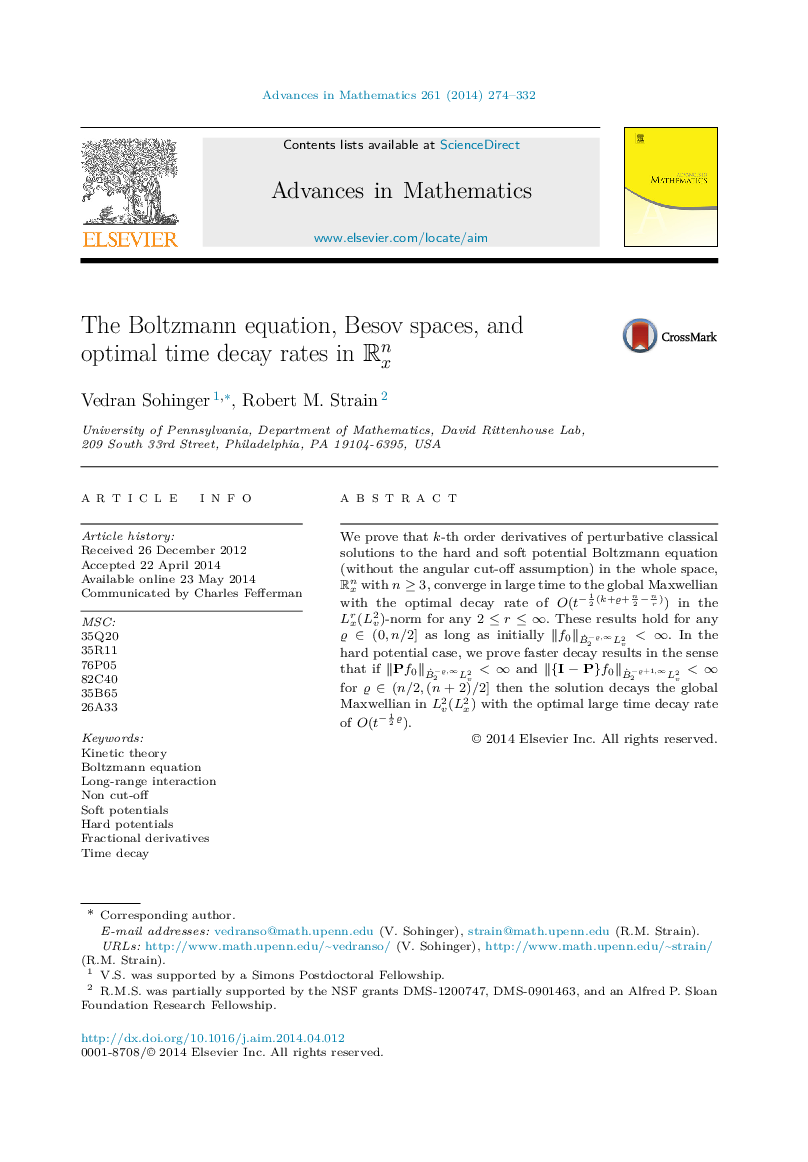| Article ID | Journal | Published Year | Pages | File Type |
|---|---|---|---|---|
| 4665741 | Advances in Mathematics | 2014 | 59 Pages |
Abstract
We prove that k -th order derivatives of perturbative classical solutions to the hard and soft potential Boltzmann equation (without the angular cut-off assumption) in the whole space, Rxn with n≥3n≥3, converge in large time to the global Maxwellian with the optimal decay rate of O(t−12(k+ϱ+n2−nr)) in the Lxr(Lv2)-norm for any 2≤r≤∞2≤r≤∞. These results hold for any ϱ∈(0,n/2]ϱ∈(0,n/2] as long as initially ‖f0‖B˙2−ϱ,∞Lv2<∞. In the hard potential case, we prove faster decay results in the sense that if ‖Pf0‖B˙2−ϱ,∞Lv2<∞ and ‖{I−P}f0‖B˙2−ϱ+1,∞Lv2<∞ for ϱ∈(n/2,(n+2)/2]ϱ∈(n/2,(n+2)/2] then the solution decays the global Maxwellian in Lv2(Lx2) with the optimal large time decay rate of O(t−12ϱ).
Keywords
Related Topics
Physical Sciences and Engineering
Mathematics
Mathematics (General)
Authors
Vedran Sohinger, Robert M. Strain,
